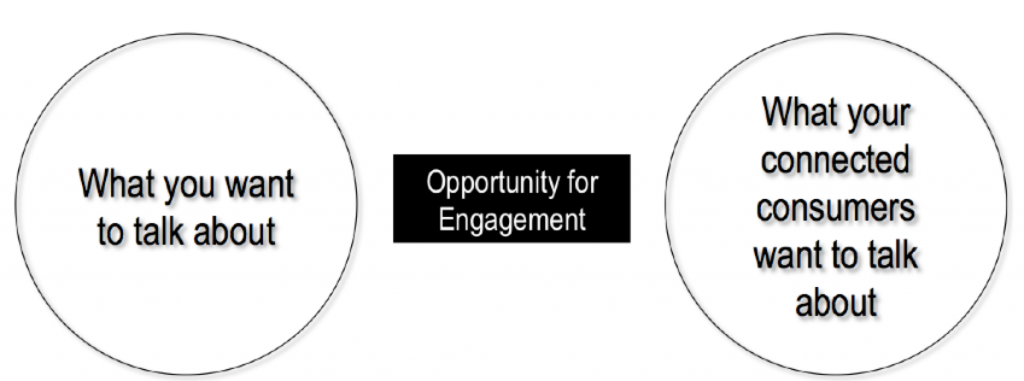
Photo taken 11/19/12 using an iPhone5 at St Kilda Beach, Melbourne Australia
The Times They Are A-Changin’
Come gather ’round people
Wherever you roam
And admit that the waters
Around you have grown
And accept it that soon
You’ll be drenched to the bone
If your time to you
Is worth savin’
Then you better start swimmin’
Or you’ll sink like a stone
For the times they are a-changin’.
– Bob Dylan
I’m sure you are wondering why I chose lyrics to open this article. If you skimmed through them, stop here for a moment. Go back through the Dylan’s words and take your time. Carefully read, and feel, what it is he’s saying and savor the moment to connect the meaning of his words to the challenges you face today.
His message is as important and true today as it was when they were first written in 1964. The tide is indeed once again turning. And even though the 60s now live in the history books, right here, right now, Dylan is telling us once again that this is our time to not only sink or swim, but to do something amazing.
This is your time. This is our time. But, these times are different and what comes next is difficult to grasp. How people communicate. How people learn and share. How people make decisions. Everything is different now. Think about this…you’re reading this article because it was sent to you via email. Yet more people spend their online time in social networks than they do in email. Duh. According to Nielsen, of the total time spent online 22.5% are connecting and communicating in social networks. To put that in perspective, the time spent in the likes of Facebook, Twitter, and Youtube is greater than online gaming at 9.8%, email at 7.6% and search at 4%.
Imagine for a moment if you and I were connected to one another in Facebook, which just so happens to be the largest social network in the world. How big? Well, Facebook is the size today of the entire Internet in 2004. There are over 1 billion people friending, Liking, commenting, sharing, and engaging in Facebook…that’s roughly 12% of the world’s population.
Twitter has over 200 million users.
Ever hear of tumblr? More time is spent on this popular microblogging community than Twitter.
The point is that the landscape for communication and all that’s affected by human interaction is profoundly different than how you and I learned, shared or talked to one another yesterday. This transformation is only becoming more pervasive and, it’s not going back.
Survival of the Fitting
But social media is just one of the channels we can use to reach people. I must be honest. I’m as much a part of tomorrow as I am of yesteryear. It’s why I spend all of my time researching the evolution of media and its impact on business and culture. Because of you, I share everything I learn in newsletters, emails, blogs, Youtube videos, and also traditional books. I’m dedicated to helping everyone not only understand, but grasp the change that’s before you.
Technologies such as social, mobile, virtual, augmented, et al compel us adapt our story and value proposition and extend our reach to be part of communities we don’t realize exist.
The people who will keep you in business or running tomorrow are the very people you’re not reaching today. Before you continue to read on, allow me to clarify my point of view. My inspiration for writing this is to help you augment, not necessarily replace, the programs you’re running today. We must still reach those whom matter to us in the ways they prefer to be engaged. To reach what I call the connected consumer of Geneeration-C we must too reach them in the ways they wish to be engaged. And in all of my work, how they connect, talk to one another, influence others, and make decisions are not at all like the traditional consumers of the past. Nor are they merely the kids…the Millennial.
Connected consumers are representative across every age group and demographic.

As you can see, use of social networks, media sharing sites, microblogs, blogs, etc. equally span across Gen Y, Gen X, and Baby Boomers. The DNA of connected customers is indiscriminant of age or any other demographic for that matter. This is more about psychographics, the linkage of people through common interests (than it is their age, gender, education, nationality or level of income. Once someone is introduced to the marvels of connectedness, the sensation becomes a contagion. It touches and affects everyone. And, that’s why this isn’t going anywhere but normalcy.
Social networking isn’t just about telling people what you’re doing. Nor is it just about generic, meaningless conversation. Today’s connected consumer is incredibly influential. They’re connected to hundreds and even thousands of other like-minded people. What they experiences, what they support, it’s shared throughout these networks and as information travels, it shapes and steers impressions, decisions, and experiences of others.

For example, if we revisit the Nielsen research, we get an idea of just how big this is becoming. 75% spend heavily on music. How does that translate to the arts? I’d imagine the number is equally impressive. If 53% follow their favorite brand or organization, imagine what’s possible. Just like this email list that connects us, connections in social networks are powerful. The difference is however, that people spend more time in social networks than they do in email.
Everything begins with an understanding of the “5 W’s and H.E.” – Who, What, When, Where, How, and to What Extent? The data that comes back tells you which networks are important to the people you’re trying to reach, how they connect, what they share, what they value, and how to connect with them.
From there, your next steps are to create a community strategy that extends your mission, vision, and value and it align it with the interests, behavior, and values of those you wish to reach and galvanize.
To help, I’ve prepared an action list for you, otherwise known as the 10 Steps Toward New Relevance:
1. Answer why you should engage in social networks and why anyone would want to engage with you
2. Observe what brings them together and define how you can add value to the conversation
3. Identify the influential voices that matter to your world, recognize what’s important to them, and find a way to start a dialogue that can foster a meaningful and mutually beneficial relationship
4. Study the best practices of not just organizations like yours, but also those who are successfully reaching the type of people you’re trying to reach – it’s benching marking against competitors and benchmarking against undefined opportunities
5. Translate all you’ve learned into a convincing presentation written to demonstrate tangible opportunity to your executive board, make the case through numbers, trends, data, insights – understanding they have no idea what’s going on out there and you are both the scout and the navigator (start with a recommended pilot so everyone can learn together)
6. Listen to what they’re saying and develop a process to learn from activity and adapt to interests and steer engagement based on insights
7. Recognize how they use social media and innovate based on what you observe to captivate their attention
8. Align your objectives with their objectives. If you’re unsure of what they’re looking for…ask
9. Invest in the development of content, engagement
10. Build a community, invest in values, spark meaningful dialogue, and offer tangible value…the kind of value they can’t get anywhere else. Take advantage of the medium and the opportunity!
The reality is that we live and compete in a perpetual era of Digital Darwinism, the evolution of consumer behavior when society and technology evolve faster than our ability to adapt. This is why it’s our time to alter our course. We must connect with those who are defining the future of engagement, commerce, business, and how the arts are appreciated and supported.
Even though it is the end of business as usual, it is the beginning of a new age of opportunity. The consumer revolution is already underway, and the question is: How do you better understand the role you play in this production as a connected or social consumer as well as business professional?
Again, this is your time to define a new era of engagement and relevance.
Originally written for The National Arts Marketing Project
Connect with me: Twitter | LinkedIn | Facebook | Google+
The End of Business as Usual is officially here…







![While AI learns and gets smarter and smarter, I spend my time preparing for the future by… [fill in the blank].
The most important skills of the future are human…
#creativity, #imagination, #individuality, #criticalthinking, #empathy
bit.ly/LifescaleBook 💫
Artist: @asiersanznieto
#promptengineering #prompting #ai #genai #artificialintelligence #keynotespeaker #motivationalspeaker #motivational #motivation #education #learning #leadership #leader](https://briansolis.com/wp-content/plugins/instagram-feed/img/placeholder.png)
Another great post from you, Brian! Love the 10 Steps Toward New Relevance. Very helpful.
Great post. The concept of “new relevance” to the customer is vital as companies are learning to sink or swim with regards to social business strategy.
I appreciate your 10 steps for new relevance. Practical tips and guides like that are extremely useful in helping organizations realize how to develop customer-centric engagement strategies and relevant, valuable content. Thanks!
lots to absorb
The internet, and most especially social media, has changed our lives in almost
every area now and this makes rethinking how we do business a priority as the
first ones to get it right will be the ones that have the greatest success. The
really significant thing that has changed is that we are almost all connected
all of the time, no matter where we are via smart phones and mobile devices.
This will have the greatest impact on the changes to the way that we all do
business in the future.
Thanks for this excellent piece. from the Dylan to the line “we live and compete in a perpetual era of Digital Darwinism” you have crystallized a great deal of divergent thinking into something that provides ‘plan ability’
Thank you for reading! It’s all about planability and execution 🙂
Excellent summary of the key trends, facts and implications. One of the best blogs I ve read in a while!
Thank you Christine. Really means a lot…
Yes, “engaging in social networks” is an important skill, whether acquired (X, BB) or congenital (Y).
But the word “engagement” is sometimes used lightly. Engagement is a lot more than sharing/liking/re-tweeting. It must engender a genuine desire to converse, discuss, rebut, reply, and ultimately, to potentially develop or nurture a real relationship.
As society is changing, having a social media profile is becoming more and more important to interact with others. Be sure to represent yourself in a way that you’d want both your closest family members and complete strangers to see you.
Hi Brian,
I agree to you that engaging in social networks is important because through engagement you can build relationship to others. Building relationship is the essential to get or gain trust from them. And also social networking is not giving or posting what you’ve done but in able for you to communicate in the community.
This is a great post, it is totally relevant to social media in today’s world.
Sometimes I forget that not everyone around me uses the same social media platforms such as Twitter. I only recently became fully aware of the social media world once I became a public relations post graduate student.
As an upcoming graduate from public relations I understand my knowledge in the social media world will be an advantage over someone that is not connected to these platforms.
Times are changing, people will need to adapt to this world of online knowledge and it will be the survival of the fitting as you said.
Thanks for the insightful read 🙂
You’re welcome and best of luck to you!
Bravo Brian • good stuff! My fave line in the whole piece || To put that in perspective, the time spent in the likes of Facebook, Twitter, and YouTube is greater than online gaming at 9.8%, email at 7.6% and search at 4%.
Cheers!
Emphasis on social media with more interactive events, and projects making brands synonymous with ever-changing technology works for me!
Great post, and question Brian!
Thank you for this opportunity to share!
Thank you Dr. Rae!
My pleasure Brian!